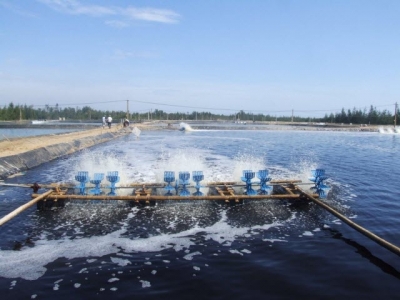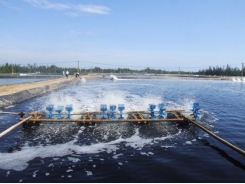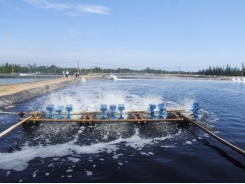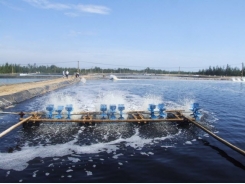The importance of biosecurity and disinfection in aquaculture (Part 1)

The world's demands for high quality aquaculture products make control of diseases increasingly important. Good Biosecurity measures are vital to maintaining healthy animals, to reducing the risk of acquiring diseases in aquaculture facilities and to harvest high quality good yield.
Biosecurity
Biosecurity can be defined as ‘the measures and methods adopted to secure a disease free environment in all phases of aquaculture practices (i.e. hatcheries, nurseries, growout farms) for improved profitability’. Biosecurity protocols are intended to maintain the "security" of a facility (i.e., prevent entry of, or reduce overall numbers prior to entry) with respect to certain disease- causing organisms (parasites, bacteria, viruses and fungi) that may not be present in a particular system.
In short, food producers have consumer safety as their primary target. If the food they produce is not safe, no economic model works. The second and equally important target is economic prosperity. Part of this process is biosecurity. It touches all the bases: environmental integrity, animal welfare, food safety and economic gain.
Biosecurity measures are the management practices that prevent non-infected, healthy animal populations from being exposed to infectious or parasitic agents. Common biosecurity measures are, Proper egg disinfection, Control of vertical disease transmission, Strict sanitation measures, Traffic control, Water treatments Effluent treatment, Clean feed, Disposal of mortalities etc.
In aquaculture, critical control points are areas in the production process that may present or permit biological hazards. Spotting these areas often requires a little foresight and common sense. One of the challenges faced by aquaculturists is to offer all the life stages of their animal’s proper sanitary conditions and Biosecurity. A comprehensive biosecurity programmer should be in place and this is essential in combating and preventing disease.
With the rapid increase in aquaculture practices, the need for disinfectants has also increased. Entry and growth of pathogens must be minimized through use of disinfectants in water, on tanks and equipment and on eggs. Disinfectants used in aquaculture are aimed at all types of infectious agents (including bacteria, fungi, viruses and protozoa). The disinfectant must come into direct contact with the disease causing organism to kill them by releasing proper amounts of active compounds.
Different Levels of Biosecurity
Although it is important that all aquaculturists understand the concepts involved, different levels of biosecurity will be applicable depending upon the purpose of the system and the species, stocking densities, frequency of movement of animals and farm/hatchery, workers/visitors/ owners into or out of the system, the economics involved, the potential impact of pathogens and other factors.
In the production facility, introduction of a virus, bacterium, parasite or fungus, not already present on the facility, will have greater overall impact. Vectors, such as carrier organisms, people or equipment, often spread disease causing organisms. If these vectors are properly disinfected at defined critical control points then exposure to disease causing organisms will be greatly reduced. An effective disinfectant is chosen based on:
- Efficacy - Proven efficacy is of major importance against the full range of viral, bacterial and fungal disease causing organisms. Particularly in aquaculture the viruses that cause diseases are extremely persistent and difficult to destroy.
- Environmental impact - A good disinfectant must kill pathogenic organisms within a facility but must not harm organisms in the environment when released.
- Operator safety – Any products used must be safe for staff employing the product and all safety protocols must be strictly adhered to.
The principles of a good Biosecurity measures apply to all systems whether they be land based (farm) or flow through (hatchery).
Good Biosecurity measures reduces the exposure to disease causing organisms with:
- External barriers – preventing the spread of disease causing organisms onto and off an aquaculture farm or hatchery.
- Internal barriers – preventing the spread of disease causing organisms within an aquaculture farm or hatchery.
External barriers – preventing the spread of disease causing organisms onto and off a farm or hatchery by focusing on;
- Pathogen-free water source at all times for land based farms.
- Total ban on movements of shrimp, prawn and fish from other farms.
- Total ban on movements from farm with older or poorer health.
- Restrictions on movements of shrimp, prawn and fish between farm sites of the same company.
- Restriction on visits to the aqua farm.
- Restriction on access to a farm site i.e. fence around the site.
- Strict sanitary measures for any people entering the farm.
- Protective clothing (disinfected).
- Foot dips and hand hygiene.
- Cleaning and disinfection measures.
- Pest control management.
Internal barriers - preventing the spread of disease causing organisms within a farm by;
- Separation of each unit within a facility and isolation of these units from each other.
- Define sanitary units or areas on each farm site
- Define sanitary measures (i.e. cleaning & disinfection, pest control measures) inside each unit or area.
- Define sanitary measures on movements between different units or areas i.e. total ban of movements from one area to another area.
- Restrict movements of tools and culture organisms.
- Strict sanitary measures for any people entering the aqua farm.
- Protective clothing (regular disinfection)
- Foot dips and hand hygiene
- Cleaning and disinfection measures
- Pest control management
Related news
Tools

Phối trộn thức ăn chăn nuôi

Pha dung dịch thủy canh

Định mức cho tôm ăn

Phối trộn phân bón NPK

Xác định tỷ lệ tôm sống

Chuyển đổi đơn vị phân bón

Xác định công suất sục khí

Chuyển đổi đơn vị tôm

Tính diện tích nhà kính

Tính thể tích ao




 The importance of biosecurity and disinfection in aquaculture…
The importance of biosecurity and disinfection in aquaculture…  EMS/AHPNS: Infectious disease caused by bacteria
EMS/AHPNS: Infectious disease caused by bacteria